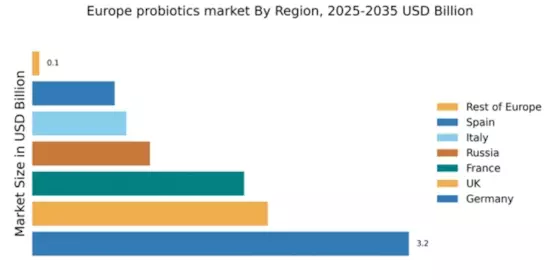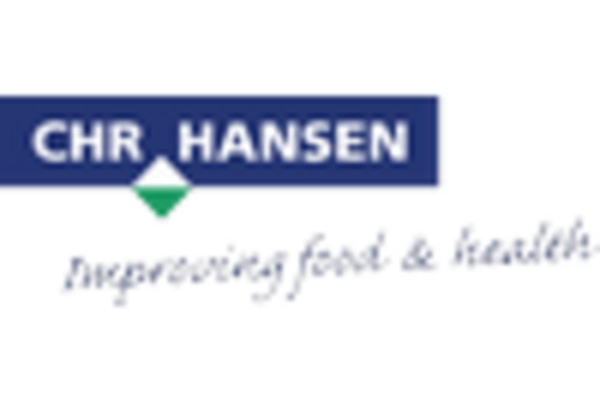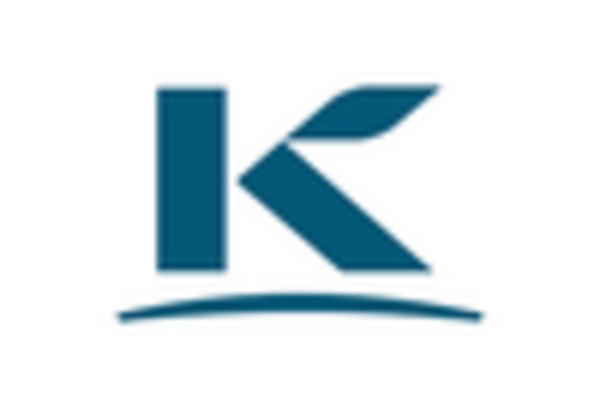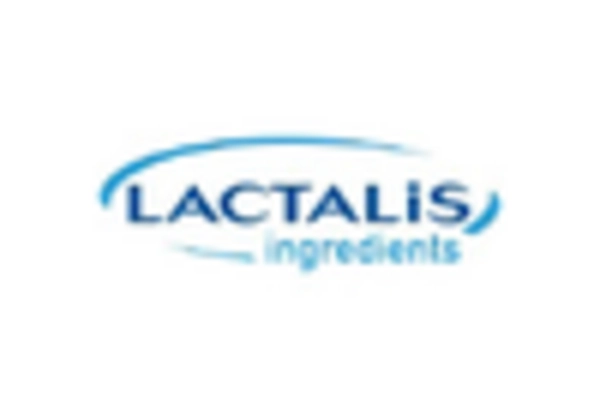Growing Health Consciousness
The increasing awareness of health and wellness among consumers is a pivotal driver for the probiotics market in Europe. As individuals become more informed about the benefits of gut health, there is a notable shift towards incorporating probiotics into daily diets. This trend is reflected in the rising sales of probiotic supplements and functional foods, which have seen a growth rate of approximately 8% annually. Consumers are actively seeking products that promote digestive health, boost immunity, and enhance overall well-being. This heightened health consciousness is likely to propel the probiotics market further, as manufacturers respond by innovating and expanding their product lines to meet the evolving demands of health-oriented consumers.
Regulatory Support for Probiotic Products
Regulatory frameworks in Europe are increasingly supportive of the probiotics market, facilitating the growth of this sector. The European Food Safety Authority (EFSA) has established guidelines that encourage the development and marketing of probiotic products, ensuring safety and efficacy. This regulatory backing not only instills consumer confidence but also incentivizes manufacturers to invest in research and development. As a result, the market is witnessing a surge in new probiotic formulations, with an estimated market value reaching €1.5 billion by 2026. The clarity provided by these regulations is likely to foster innovation and expand the range of probiotic offerings available to consumers.
Increased Investment in Probiotic Research
The probiotics market in Europe is witnessing a surge in investment directed towards research and development. Academic institutions and private companies are collaborating to explore the health benefits of probiotics, leading to a greater understanding of their mechanisms and applications. This influx of research funding is expected to yield new probiotic strains and formulations, enhancing product offerings. Market analysts project that the investment in probiotic research could reach €200 million by 2027, indicating a robust commitment to advancing this field. As new findings emerge, they are likely to influence consumer preferences and drive the growth of the probiotics market.
Rising Popularity of Plant-Based Probiotics
The trend towards plant-based diets is significantly influencing the probiotics market in Europe. As more consumers adopt vegetarian and vegan lifestyles, there is a growing demand for plant-based probiotic sources. Products derived from fermented plant materials, such as kombucha and tempeh, are gaining traction. This shift is reflected in market data, indicating that plant-based probiotic products are expected to grow at a CAGR of 10% over the next five years. The increasing availability of these products in retail and online channels is likely to attract a broader consumer base, further driving the growth of the probiotics market.
Technological Advancements in Probiotic Delivery Systems
Innovations in probiotic delivery systems are emerging as a crucial driver for the probiotics market in Europe. Advances in encapsulation technology and microencapsulation techniques are enhancing the stability and bioavailability of probiotics, making them more effective. These technological improvements allow for the development of new product formats, such as gummies and beverages, which appeal to a wider audience. The market is projected to experience a growth rate of 7% annually as these innovations gain traction. As manufacturers continue to invest in research and development, the potential for new and improved probiotic products is likely to expand, thereby stimulating market growth.


















Leave a Comment